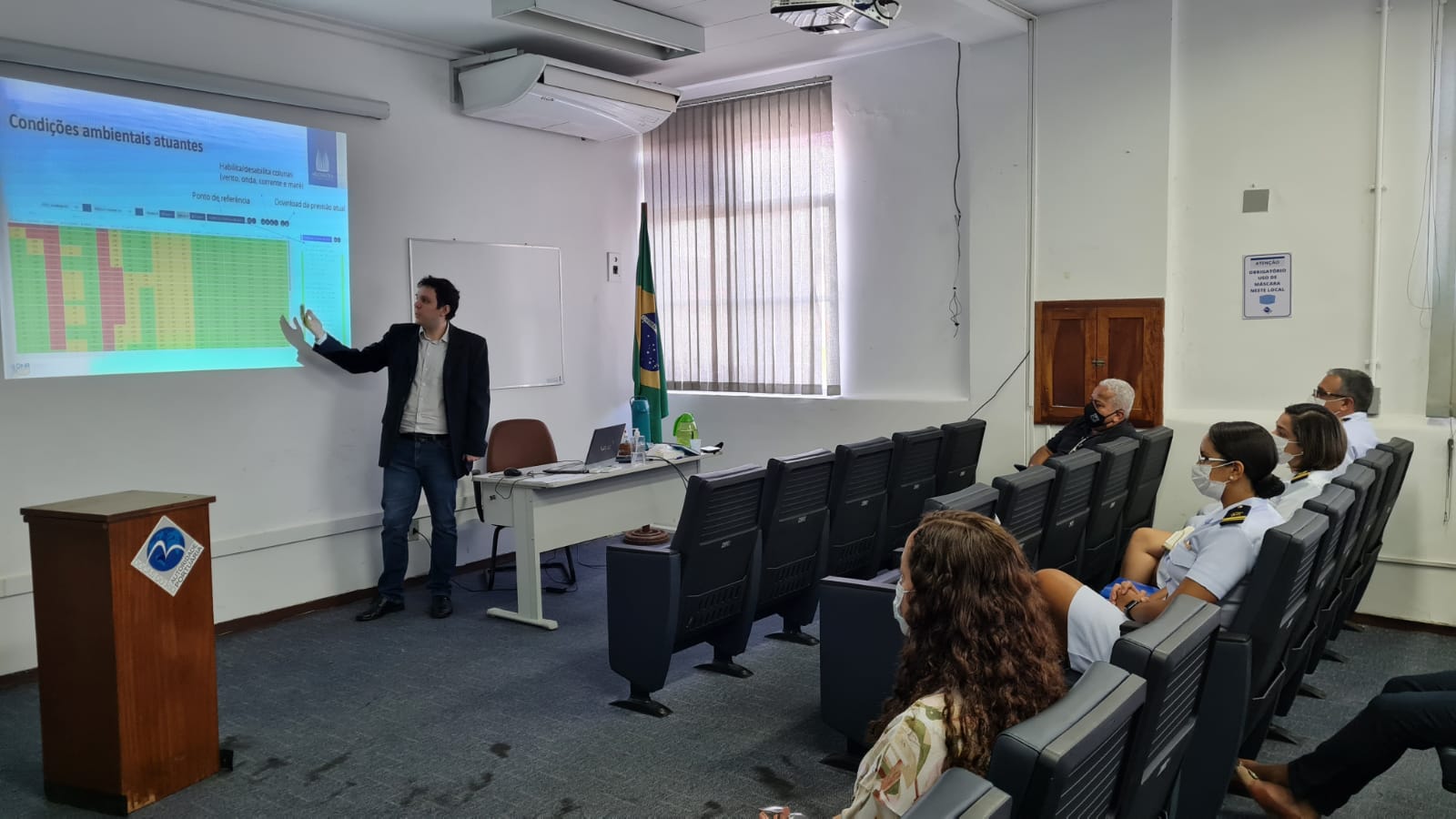Advances the process of implementing the dynamic draft at the Port of Rio de Janeiro
In order to continue the process of implementing the ReDRAFT® software to determine the Dynamic Clearance Below the Keel (FDAQ), within the scope of the Port of Rio de Janeiro, three officers from the Port Authority of Rio de Janeiro (CPRJ) carried out a visit technique, last Monday (22), to the Waterway Access Management of the port, where the system operates.
The officers of the Brazilian Navy (MB) were welcomed by Marcelo Villas-Bôas, manager of VTMIS (English acronym for Vessel Traffic Management and Information System) at Companhia Docas do Rio de Janeiro (CDRJ), by the Waterway Access manager from the Port of Rio de Janeiro, Roque Pizarroso, and by the team of specialists and technicians in the sector.
In his presentation, Villas-Bôas explained that the first stage of the VTMIS project – the implementation of a Local Port Service (LPS) – should be completed by the end of the 1st half of 2022. Then, the manager detailed the architecture of the facilities , especially the meteorological and hydrological sensors of the VTMIS Environmental Monitoring System (SMA). This equipment should be installed in the 1st quarter of next year at remote VTMIS stations located in several Military Organizations of the MB, according to an agreement signed with the Maritime Authority, aiming to cover the entire area of interest in the Guanabara Bay, given its relevance as source of information for dynamic draft software.
Villas-Bôas also highlighted the Technical Cooperation Agreement (ACT), signed with the Federal Universities of Rio Grande do Sul (FURG) and Rio de Janeiro (UFRJ), for access to information on the meteorological buoys of the Monitoring System of the Costa Brasileira (SiMCosta), which provide measurements of environmental conditions. "These data, obtained almost in real time in the main navigation channels to access the Port of Rio de Janeiro, are essential for the operation of the ReDRAFT® dynamic draft system, so that it can operate with ships with larger drafts, in addition to producing data extremely useful to the maritime and scientific community”, he highlighted.
The VTMIS manager also explained that "the implementation of the dynamic draft, within the scope of a Port Authority, a pioneering fact in the country, results fundamentally from another ACT signed by Docas do Rio with the leasing companies of the Port of Rio de Janeiro (ICTSI Rio , MultiRio and Triunfo Logística), which led to the choice of the ReDRAFT® software as a tool for calculating the FDAQ”.
Visitors also watched the explanation of naval engineer Dr. Felipe Ruggeri from Argonáutica, the company responsible for the ReDRAFT® dynamic draft software, who developed a detailed technical report with application information and system verification runs carried out at from actual maneuvers of several ships in recent months, in faithful compliance with the requirements set by the Maritime Authority Standard - NORMAM-33.
Understand the dynamic draft
Systems such as ReDRAFT® analyze how the various environmental factors that affect the dynamic behavior of each vessel, calculating the maximum operating draft for each maneuver. The implementation of this system ensures that vessels, even under adverse weather and oceanographic conditions, will maintain a safe distance between the ship's keel and the bottom of the navigation channel. A series of variables are considered, such as: type of vessel, speed, tides, winds, currents, waves, temperatures, salinity, sinking by speed in restricted waters (squat effect) and the path of the vessel in the channel.
All this information, plus the bathymetry data and channel characteristics are processed in real time, generating a result that presents the maximum draft in each situation, considering the vertical displacement of the ship in motion, without compromising the safety of navigation. In addition, this monitoring can increase operational efficiency, as it facilitates decision-making regarding the entry and exit of ships; make the use of the channel more flexible; generate economic gains as it allows for an increase in ship loading; increase operating windows, reducing overstay of ships; assess the impact of siltation; optimize dredging costs; among other benefits.
By ASSCOM

